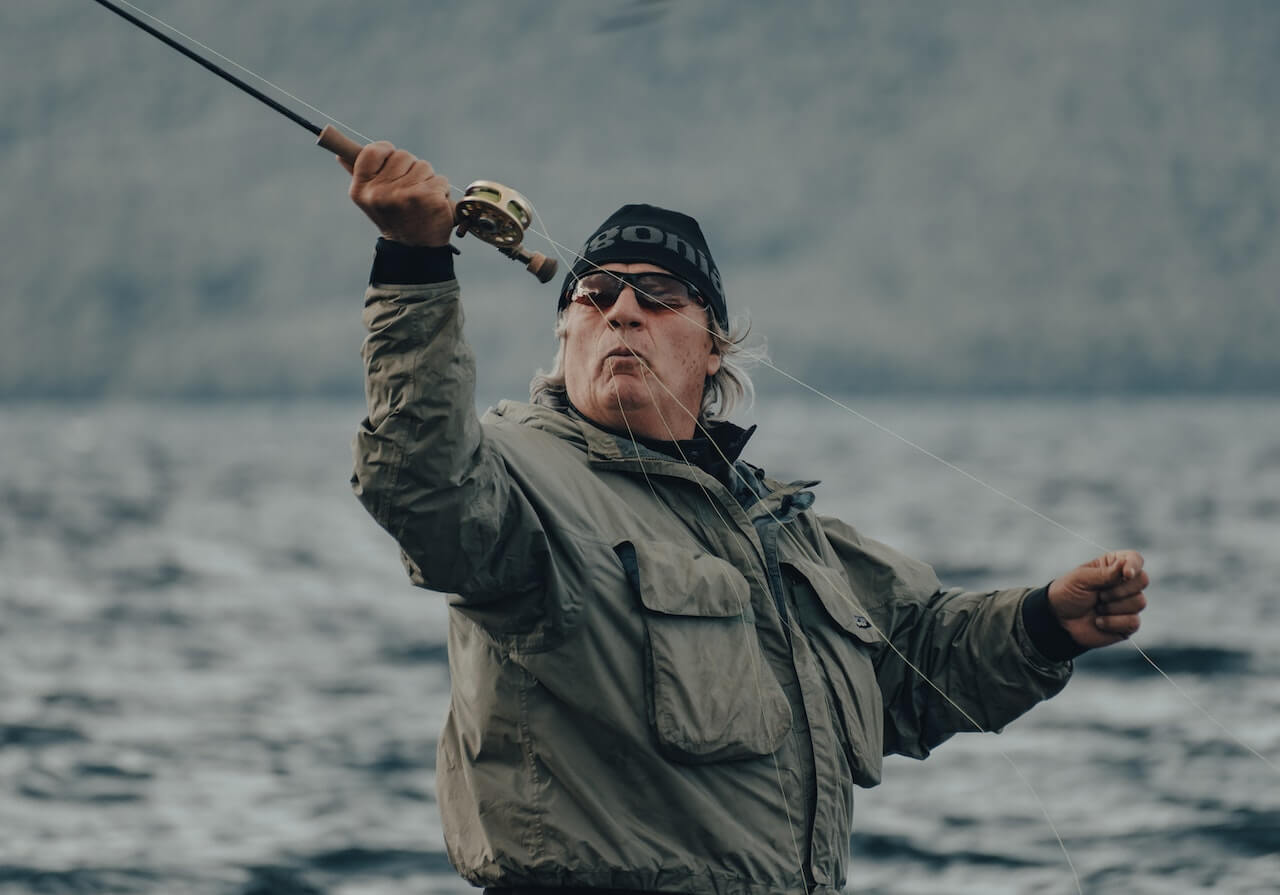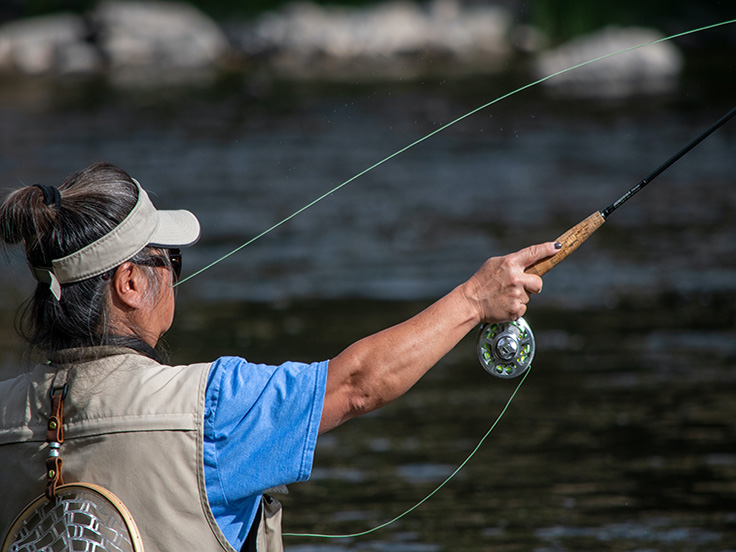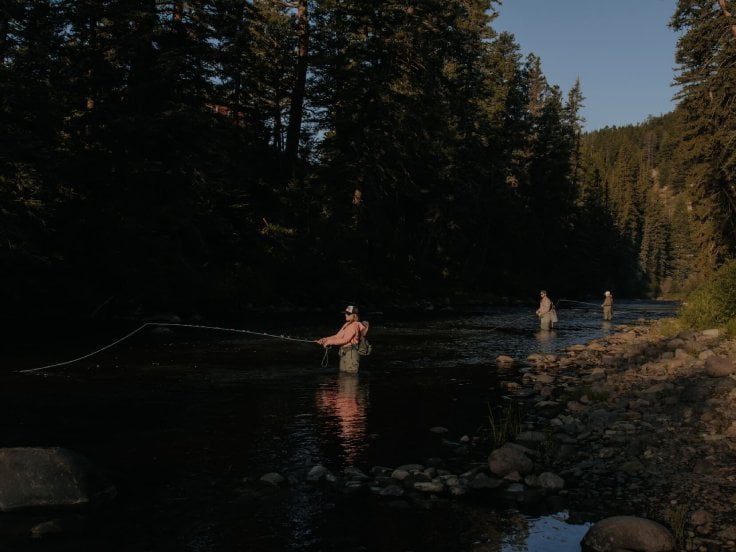
In the exciting world of fly fishing, mastering casting and presentation techniques is essential to maximise your chances of success. In this article, we'll show you some of the most effective techniques you can use to improve your fishing experience and catch more fish.
Casting techniques

Casting is at the heart of fly fishing, and there are many ways to achieve a smooth, accurate cast. Here are some of the most popular casts and how to use them:
- Back cast: This is the basic cast in fly fishing. It consists of throwing the line back over the shoulder, then bringing it quickly forward to deposit the fly on the water.
- Roll cast: This cast is used when there is no space behind you to make a back cast. The roll cast allows you to loop the line in front of you before placing it on the water.
- Spey cast: This particular technique was developed for fishing large rivers where space is limited and there is often a fast current. Spey casting allows you to cover long distances without the need for a back cast.
- Crossbow: The crossbow cast is used to project the fly under branches or in areas that are difficult to access. To make this type of cast, hold your rod horizontally in front of you, pull your fly towards you, then let go. In this way, the fly is propelled forward by the power of the rod and its elasticity.
- Double pull: This casting technique is used for casting flies and streamers far away and into the wind. The double pull allows you to propel the fly further and more accurately, while controlling the speed and direction of the line.
Tips for improving your casts:
- Practise regularly: As with any skill, practice is essential to develop and improve your casting technique. Try to practise at least once a week, even if it's just in your garden or a park.
- Choose the right equipment: The rod, reel and line you use all have an impact on the quality of your cast. Make sure you use the right equipment for your skill level and fishing conditions.
- Keep tension in the line: Constant tension between the fly, the line and the rod is essential for an accurate and effective cast. Try to keep the line taut at all times and avoid loops.
- Use your whole body: Don't rely solely on the strength of your arms to make a cast. Instead, use the rotation of your body and the bending of your legs to generate power and accuracy.
- Practise with an experienced angler: Fly fishing is a physical activity. It's important to learn the right movements to make good casts and avoid hurting your shoulder or wrist.
Presentation techniques

Once you've mastered the art of casting, it's time to concentrate on presenting the fly on the surface of the water. Here are a few techniques to help you make your fly more attractive to fish:
- Dead drift: This technique involves presenting the fly in such a way that it appears to be an insect floating lifelessly on the water. Simply let the fly drift with the current, avoiding any tension in the line.
- The strip: The strip is a method used to animate the fly underwater, imitating the movement of a hard bait or insect. To strip, pull slowly and steadily on the line with your free hand while retrieving excess line with your reel.
- The twitch: The twitch is another method of animating the fly, but instead of pulling on the line, it involves giving short, rapid strokes with the rod to make the fly move erratically.
Tips for improving your presentations:
- Observe nature: Take the time to study the movements of the insects and fish you are trying to imitate, and try to reproduce these movements as faithfully as possible with your fly.
- Adapt to the conditions: Fishing conditions can vary considerably from day to day, and even from hour to hour. Be prepared to adjust your presentation technique according to the conditions, particularly the speed of the current and the clarity of the water.
- Be discreet: Fish are often wary and may be frightened by the presence of an angler. Try to approach fishing areas discreetly and minimise any sudden movements or noise you make.
- Practise on the grass: Using a hoop, practise casting into it while keeping your line straight.
In short, mastering casting and presentation techniques is essential for success in the art of fly fishing. Take the time to learn and practise these skills, and you'll see your results improve over time. Don't forget that every fishing trip is an opportunity to learn and progress, so don't hesitate to experiment and adapt your methods according to the conditions and situations you encounter.
Our other articles to help you improve your fly fishing:
